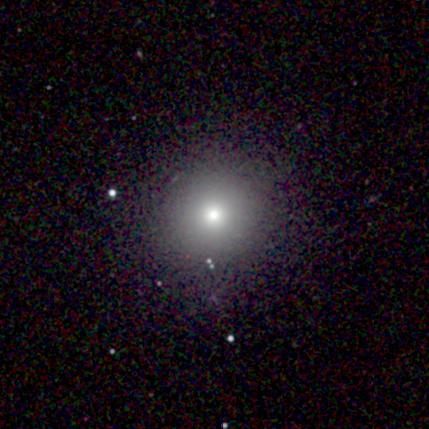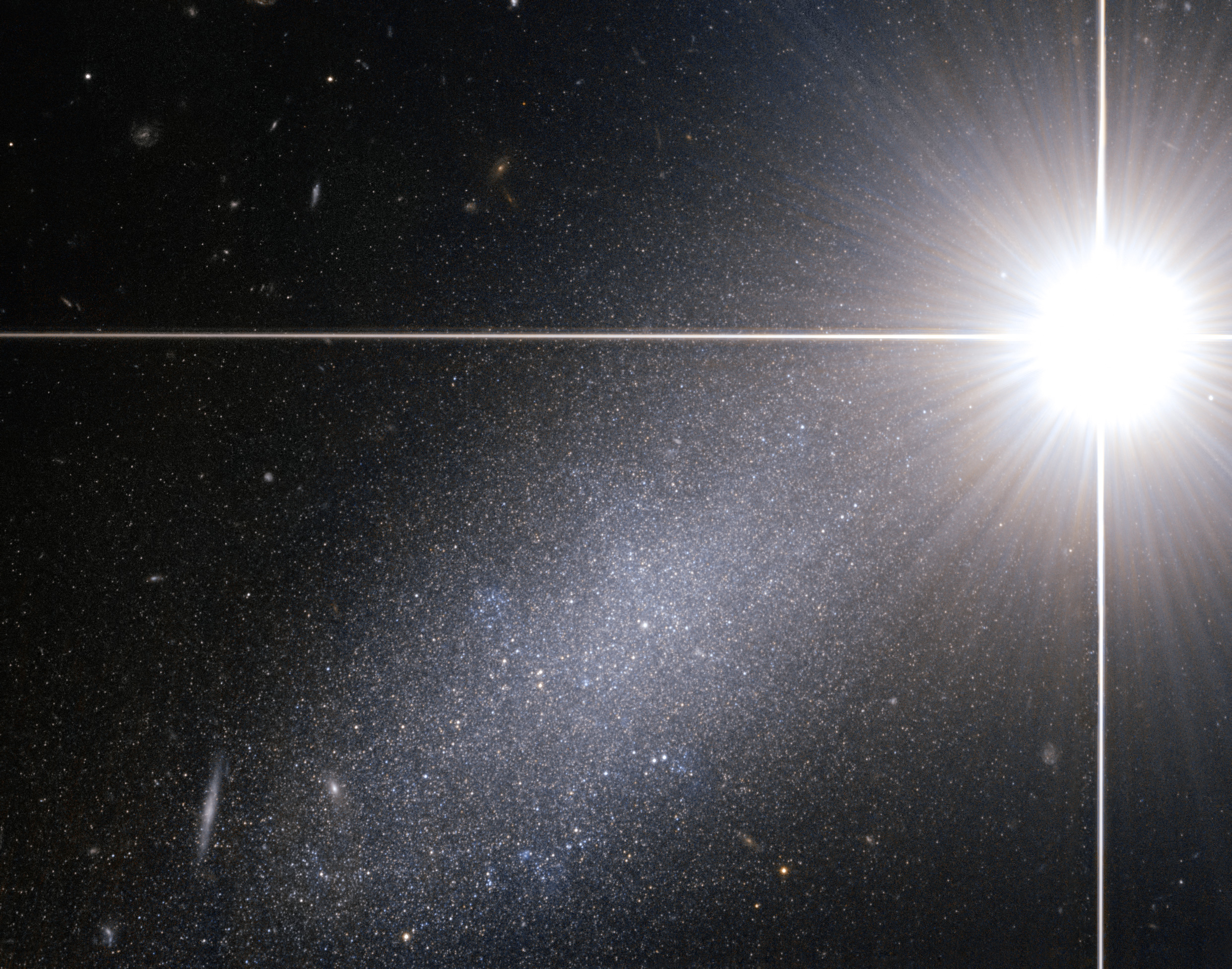Milky Way baryons
Suppose the rotation curve of the Milky Way stays flat at 220 km/s out to the "edge" of the dark matter halo at 180 kpc.
- What is the dynamical mass of the Milky Way within this edge?
- What is the detected baryon fraction of the Milky Way?
The tally of known stars and gas is approximately 5 x 1010 M☉. - If the cosmic baryon fraction fb = Ωb/Ωm = 0.15, what mass of baryons is missing?
- Speculate on the current location & state of the missing baryons.
i.e., where are they now? what form are they in?
Elliptical galaxies: big & bright; small & dim

M89 is a giant elliptical galaxy with luminosity L = 1011 L☉, effective radius Re = 500 pc, and velocity dispersion σ = 252 km/s.
- What is the mass-to-light ratio of M89?
- Does this system require dark matter?
Draco is a dwarf Spheroidal satellite of the Milky Way. It has luminosity
L = 2 x 105 L☉,
effective radius Re = 220 pc,
and velocity dispersion σ = 10 km/s.

- What is the mass-to-light ratio of Draco?
- Does this system require dark matter?
You may assume isotropy; i.e., the usual virial theorem applies.
Tully-Fisher
Derive an explanation for the Tully-Fisher relation.
Be sure to state explicitly any necessary assumptions.
Note: this problem is intentionally vague. This is the sort of thing we are faced with in science: an observed phenomenon that does not yet have a clean textbook explanation. Consider this an opportunity to be creative: why do you imagine TF happens? What must you assume? Can you justify your assumptions? What are the observable consequences? Be sure to derive these quantitatively: once you make a hypothesis, where does it lead?
ASTR 433 only: How should the rotation velocity vary with disk scale length at a given luminosity? What do you conclude from the observation that there are no residuals with scale length?
Timing Argument
Andromeda is 770 kpc away from the Milky Way and approaching us at 120 km/s. Lets assume that these two most massive galaxies of the Local Group (having a total mass m+M) started out expanding away form each other with the Hubble flow but are now falling together on a perfectly radial orbit (e = 1).
Eine kleine orbit theory:
The position of an object r(t) along an orbit can be described by the development parameter η such that
r = a[1-e cos(η)]
t = {a3/[G(m+M)]}1/2 [η-e sin(η)]
where e is the eccentricity of the orbit and a is the semimajor axis.
η measures the progress from one pericenter (η = 0 at t = 0) to the next
(at η = 2π).
The above expressions can be combined to find the speed
dr/dt = (dr/dη)/(dt/dη) = {[G(m+M)]/a}1/2 e sin(η)/[1-e cos(η)] = (r/t0){e sin(η)[η-e sin(η)]}/[1-e cos(η)]2
(see the end of chapter 4 of Sparke & Gallagher).
Traditionally one assumes an age for the universe (t0) in order to solve for η. That's a tad tedious, so instead accept that η=4.2 and determine
- the semimajor axis a
- the age t0
- the total mass m+M
- the time to when Andromeda crashes into us.
- the mass-to-light ratio of the Local Group.
The luminosity of Andromeda is 2.7 x 1010 L☉ and that of the Milky Way is 1.5 x 1010 L☉. You may neglect the rest of the Local Group (see Table 4.1 of Sparke & Gallagher). - is dark matter required?
ASTR 433 only:
Now suppose the orbit is not perfectly radial, but still pretty eccentric.
The development parameter doesn't change much from the e = 1 case.
Adopting e = 0.8 and η = 4.3 for an age of 13.2 Gyr,
determine the semi-major axis a of the orbit.
Assume their centers require a clearance of 100 kpc for safe passage.
That's twice the distance to the Magellanic Clouds.
Recall that the pericenter = a(1-e).